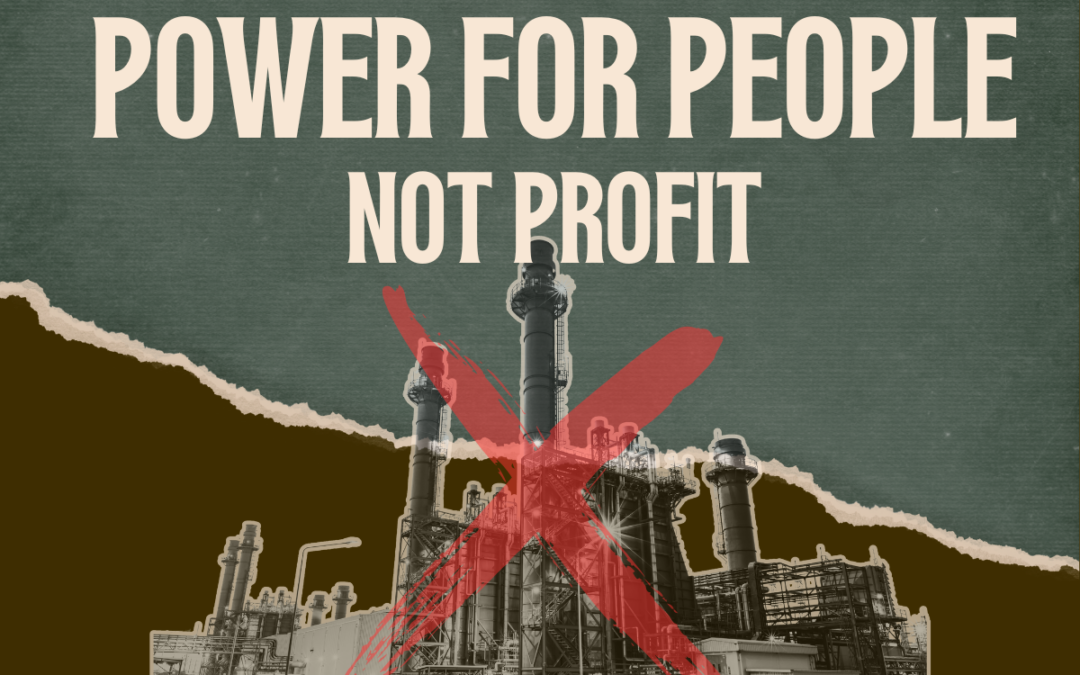
Ruth Rosell is Director of the Buttry Center for Peace and Nonviolence at Central Seminary (Shawnee, KS), where she is also Associate Professor of Pastoral Theology Emerita. As Director of the Buttry Center, she has focused significant effort on raising awareness, educating, and working to engage faith communities and individuals in responding to the climate crisis with effective action. She is a member of CEP’s Wind Energy Advisory Group. This article was originally written for the Buttry Center blog Pondering Peace.
Each morning when I step outside I encounter two wondrous aspects of God’s creation – the sun and the wind. The sun, of course, is the source of light and heat that makes possible life on earth. Recognizing its essentiality for life, many ancient cultures viewed this blazing ball in the sky as a diety. The Hebrew Scriptures were clear in this regard. The sun was created by God, and the psalmist calls upon it to worship God (Ps. 148:3).
The Hebrew word ruakh denotes both wind and spirit. We read of its presence in the Genesis creation narrative in which “a wind from (or spirit of) God swept over the face of the waters” (1:2). The wind has ongoing importance in the work of creation for its many roles in affecting weather patterns and scattering seeds. The Greek word in the New Testament pneuma likewise can refer to either wind or spirit. In John 3, Jesus speaks of the mysterious aspects of the wind’s origins and activities as instructive of the Spirit’s work. The invisibility of the wind nevertheless makes itself known in the effects of its presence.
In the face of the climate crisis, both the sun and wind are sources of new blessing. By harvesting solar energy from the sun in solar panels and harnessing the power of the wind with wind turbines, both sun and wind have become tremendous sources of clean and sustainable energy. The sun’s light continuously reaches the earth’s surface with energy that is 10,000 times more than what the whole world uses (Drawdown, 10). In fact, the earth receives more solar energy in one hour than humanity uses in a year. And atmospheric scientists indicate that just two percent of Earth’s wind could power all of civilization (Regeneration, 196). These clean sources of energy are essentially limitless.
At one time, quite probably, fossil fuels were also regarded as a source of blessing. Extracting and burning these compacted sources of combustible carbon made it far easier to heat homes, cook food, and power industrial processes that make the many products we consume. Starting with the Industrial Age, but accelerating greatly since the 1950s, the burning of fossil fuels has transformed the world. Never before have such large numbers of people, principally in developed countries, lived in such comfort with so many material possessions. And never before has humanity been faced with the potential demise of the ecosystems that support life on earth.
We are realizing now that the combustion of coal, oil, and gas has come with a steep cost. Their extraction, processing, and burning produce pollution with toxins and particulate particles that globally cause the premature deaths of over eight million people each year. And their use is a principal driver of the climate crisis by producing 82 percent of the carbon dioxide emissions being released into the atmosphere (Regeneration, 193). If we consider God to be the creator of our earth and therefore the source of the complex processes that make this planet hospitable for life, then we see that the burning of fossil fuels goes against creation’s design because it disrupts the carbon cycle. Paul Hawken writes, “The climate crisis has been caused by hundreds of millions of years of carbon captured by plants, trees, and marine phytoplankton being released back into the atmosphere in a geologic faction of a second” (Regeneration, 193). This substantial increase of carbon dioxide emissions function as greenhouse gases, disrupting the delicate balance of solar radiation so that more of the sun’s heat is trapped within the earth’s atmosphere, leading to global warming and climate change.
When we understand the many natural processes that people of faith regard as creation’s design and see the destruction wrought by their disruption, it becomes ever more clear that to continue on the path of using fossil fuels for energy is wrong, especially when there are other sources of energy readily available. Whereas the scientists of fossil fuel companies have known for many decades that the release of carbon would cause global warming, most of us have only more recently begun to understand this. We have not knowingly participated in this destruction, but now that we know, we are responsible to change. We must change our way of living to be more in harmony with nature and creation’s design by transitioning away from using fossil fuels to using clean sources of energy. This is what climate scientists are telling us must be done as rapidly as possible. Fortunately, humanity has the knowledge and technologies to do this, but it will require everyone – governments, businesses, communities, and individuals – all of us working together to make it happen.
Fossil fuels (coal, oil, and gas) still provide 84% of global energy, with renewable sources a small, although growing percentage. The UN Intergovernmental Panel on Climate Change (IPCC) has indicated that to avoid greatly worsening effects of climate change, fossil fuel emissions need to be reduced by 45-50% over 2010 levels by 2030. This is a heavy lift, and in practical terms will require utility-scale solar and wind farms, along with all other forms of clean renewable energy, including rooftop and community solar. In light of our calling to care for creation and the urgency of the situation, I believe that people of faith need to be advocates for clean energy in whatever forms are possible in their communities.
There are more federal policies needed to undergird this clean energy transition, and as we learn of them we can write or call our congressional leaders. But I am learning that probably we can have an even greater impact by working at the local level to express and build support for clean energy project proposals. Often it is at the local level where a few people make the final decisions as to whether proposed projects can proceed. In the part of Kansas where I live, it is three people on the Board of County Commissioners who have this decision-making power. They want to hear the views of those they represent, and so there are processes in place for expressing one’s thoughts and concerns through giving public comments, either spoken or written.
Currently, there is a large utility-scale solar project proposed for western Johnson and eastern Douglas counties in Kansas called the West Gardner Solar Project. It is a wonderful opportunity to significantly increase solar energy in the area. Unfortunately, misinformation, suspicion of large companies, and resistance to change are causing opposition. While care must be taken in siting such projects, the urgency of the climate crisis must also be considered. People of faith and conscience are needed to fully engage their role as citizens and publically express their support for clean energy. This aspect of climate action involves attending County Commissioners’ meetings, making public statements of support, and reaching out to educate and encourage others to do the same. This is what I am currently doing, and I believe that such work is part of caring for creation during this crucial decade.
This evening, as I watch the sun set in a glorious display of color and feel a gentle breeze caress my skin, I am grateful. I am grateful for God’s gracious provision of all the clean solar and wind energy we need to live well. I am grateful for human intelligence and technological ingenuity that have figured out how to harness this clean energy for our use. With God’s Spirit working through these gifts, I am hopeful that we can transition into a better, cleaner, and healthier world.
Ruth Rosell
Director of the Buttry Center for Peace and Nonviolence
Associate Professor of Pastoral Theology Emerita
Central Seminary, Shawnee, KS
The views expressed in this article are solely those of the author.
Two excellent resources for learning more about climate solutions are:
Drawdown: The Most Comprehensive Plan Ever Proposed to Reverse Global Warming edited by Paul Hawken (Penguin Books, 2017)
Regeneration: Ending the Climate Crisis in One Generation by Paul Hawken (Penguin Books, 2021)


